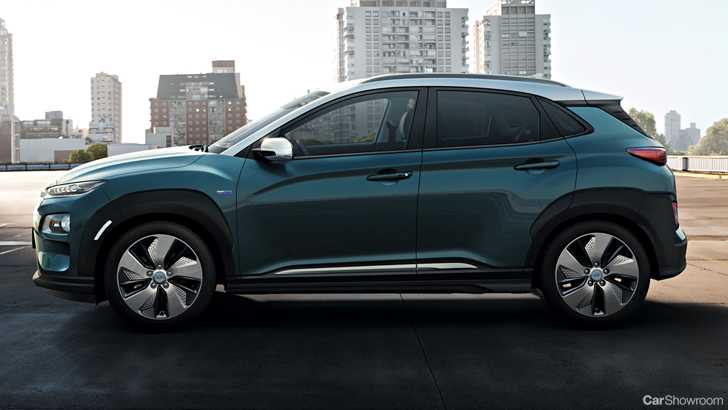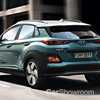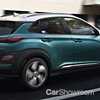Not bad for an affordable electric family car.
Korean carmaker Hyundai has begun the sale of its new Kona Electric in the UK, and is set to be a popular option for buyers looking for a cheap-to-run, environmentally-friendly family car. The Kona is Hyundai’s entrant into the popular compact SUV segment, and with the Kona Electric, the Korean marque is aiming to offer greater powertrain options to its customers in the hotly-contested small-SUV space.
The Kona arrives on the UK market with two battery options with differing outputs. There’s a base 39kWh battery pack with some 100kW of power and 395Nm of torque, while there’s a more powerful 64kWh battery pack with a total motor output of 150kW and the same 395Nm. The more powerful of the two cars also packs a range of up to 482km on a full charge according to new testing standards, while the entry-level car’s range remains undefined.
The base Kona SE 39kWh will set you back some £24,995 after a £4500 reduction in price thanks to a government grant. All told, you’re looking at about a $45k entry point, which isn’t bad as far as electric cars go, though it’s worth noting that a Nissan Leaf is cheaper (but it has an ever-so-slightly shorter range).
The entry-level 39kWh models get a 100kW electric motor as mentioned earlier, capable of rocketing the Kona from rest to 100km/h in about 9.3-seconds, whereas the more powerful 64kWh model can do the same sprint in just 7.6-seconds. Efficiency ratings for the Kona EV have yet to be released, though we can’t imagine they’d be far off the industry pace.
The Kona was engineered with electrification in mind. As such, the electric battery pack hasn’t made a dent in the Kona’s practicality stats. The boot is as large as 373L with the charger cable not in the car; pack it in, and you’ve got 332L. There’s also some room under the bonnet, given there’s no engine. We’d suggest putting the charger cable there.
Plug in the top-spec 64kWh model into a 100kW fast charger, and you’ll be able to get 80% capacity from flat in just 54mins. Find yourself plugged into a regular household socket and be prepared to wait nearly 10-hours for a full charge. The 39kWh car gets fast-charged at the same rate, but charging from a standard plug will only take a little over 6hrs to replenish full range.
A handful of changes were made in the transition from internal combustion to full-electric for the Kona, including a closed-off grille (replete with an integrated charging port), a rear bumper with active air flaps, and unique-design 17-inch alloy wheels that are optimised for greater aerodynamics.
And inside, there’s things like a digital dashboard to better display the complexity of the powertrain beneath, as well as a heads-up display, a 7.0-inch infotainment screen (8.0-inch on the Premium models), as well as the option of heated and ventilated front seats, and a eight-way electrically-adjustable drivers seat.
Tech plays a big role with the Kona Electric, and so it comes as standard with things like autonomous emergency braking, adaptive cruise control, and lane-keep assist. On higher-end models, there are also features like rear cross-traffic alert and blind-spot monitoring, too.
With deliveries set for August, we can’t help but wonder what this means for Australia. The Kona Electric is part of Hyundai’s pledge to bring 18 new electrified vehicles to the market by 2025, and with a properly usable sub-500km range on tap, the Kona Electric might have just what it takes to hack it in our market.
For more information on Hyundai, check out our Showroom.






























